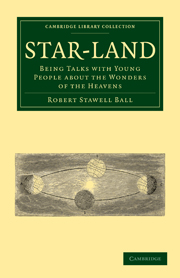Summary
WE TRY TO MAKE A MAP
The group of bodies which cluster around our sun forms a little island, so to speak, in the extent of infinite space. We may illustrate this by a map in which we shall endeavour to show the stars placed at their proper relative distances. We first open the compasses one inch, and thus draw a little circle, which I intend to represent the path followed by our earth, the sun being at the centre of the circle. We are not going to put in all the planets. We take Neptune, the outermost, at once. To draw its path I open the compasses to thirty inches and draw a circle with that radius. That will do for our solar system, though the comets no doubt will roam beyond these limits. To complete our map we ought of course to put in some stars. There are a hundred million to choose from, and we shall begin with the brightest. It is often called the Dog star, but astronomers know it better as Sirius. Let us see where it is to be placed on our map. Sirius is beyond Neptune, so it must be outside somewhere. Indeed, it is a good deal further off than Neptune; so I try at the edge of the drawing-board: I have got a method of making a little calculation that I do not intend to trouble you with, but I can assure you that the results it leads me to are quite correct; they show me that this board is not big enough.
- Type
- Chapter
- Information
- Star-LandBeing Talks with Young People about the Wonders of the Heavens, pp. 297 - 356Publisher: Cambridge University PressPrint publication year: 2010First published in: 1889



